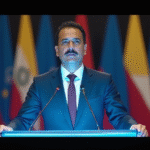100 Million Users
Internet access in Mexico continues to expand. By 2024, the number of users surpassed 100 million, reaching an 83.1% penetration of the population according to Mexico’s National Survey on the Availability and Use of Information and Communication Technologies in Households (ENDUTIH) by INEGI. This growth is significant, as the figure was only 61.4 million in 2015.
The most common online activities include social media, interpersonal communication, remote work, and entertainment. Online casinos have gained popularity, prompting platforms like BonusFinder Mexico to evaluate various real-money online casino options for those interested in this area.
Between 2023 and 2024, the user base grew from 97 million to 100.2 million, reflecting a sustained trend towards total connectivity in the country. Since the first study edition in 2015, the number of users has increased by approximately 40 million people.
The Urban-Rural Digital Divide
While overall growth is discussed, the digital divide between urban and rural areas remains persistent due to insufficient services. In 2024, 86.9% of the urban population had internet access, while rural areas stood at 68.5%.
It’s important to note that this gap has narrowed significantly due to mobile connectivity expansion, but it still persists at over 18 percentage points and is even worse when considering internet quality. While high-speed connections are easily found in major cities, rural areas struggle with this aspect.
The mobile phone remains the dominant device for internet access, used by over 97% of users. Other access devices include smart TVs (43.6%), computers (35.9%), and video game consoles (8.1%).
Primary Payment Methods for Internet Use in Mexico
Due to the large number of unbanked individuals, Mexico’s e-commerce has unique characteristics. Although debit and credit cards are the most commonly used payment methods, cash payments through establishments like OXXO and 7-Eleven follow closely.
Although not direct online payments, many users prefer cash transactions in physical stores for online purchases due to their lack of banking. The International Labour Organization estimates that unregistered employment affects 53% of Mexican workers, implying a significant portion of the population lives without bank cards.
Meanwhile, virtual wallets like MercadoPago and PayPal, as well as cryptocurrencies, are gaining ground as payment methods in e-commerce, academies, online casinos, and sports betting sites.
Lastly, bank transfers (SPEI) are a secure option but are less preferred for online payments due to waiting times and the previously mentioned lack of banking.
The Ambitious Satellite Internet Plan by the Government
Under President Claudia Sheinbaum’s administration, the government recently launched a project to provide free satellite internet to over 3,000 rural communities.
The plan aims to help close the digital divide and ensure access to essential services like education, healthcare, and government management through the internet.
According to Mexico’s Digital Transformation and Telecommunications Agency, the new satellite will enable much broader national coverage, reaching historically disconnected regions.
The Mexican satellite mission aims to lead a Latin American space mission in 2027, headed by a Mexican woman. If successful, it would be a historic milestone for the region and the country, improving the quality of life for millions while boosting key sectors like agriculture, public safety, and civil protection.
Key Questions and Answers
- What is the current state of internet access in Mexico? Internet usage has grown significantly, with over 100 million users and an 83.1% penetration rate.
- What are the most common online activities in Mexico? Social media, interpersonal communication, remote work, and entertainment are the most popular online activities.
- What is the digital divide between urban and rural areas in Mexico? The urban internet access rate is 86.9%, while rural areas stand at 68.5%. This gap is due to insufficient services, with rural areas struggling more with internet quality.
- What are the primary payment methods for internet use in Mexico? Despite debit and credit cards being the most common, cash payments through OXXO and 7-Eleven follow closely. Virtual wallets and cryptocurrencies are gaining traction.
- What is the government’s plan for internet access in rural areas? The government aims to provide free satellite internet to over 3,000 rural communities, helping close the digital divide and ensuring access to essential services.






